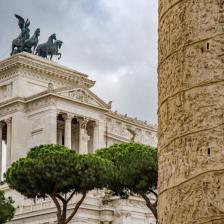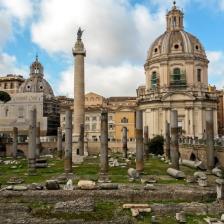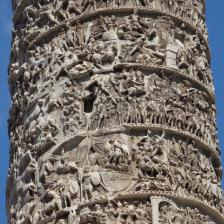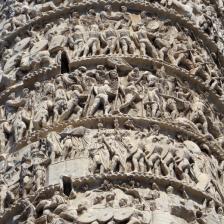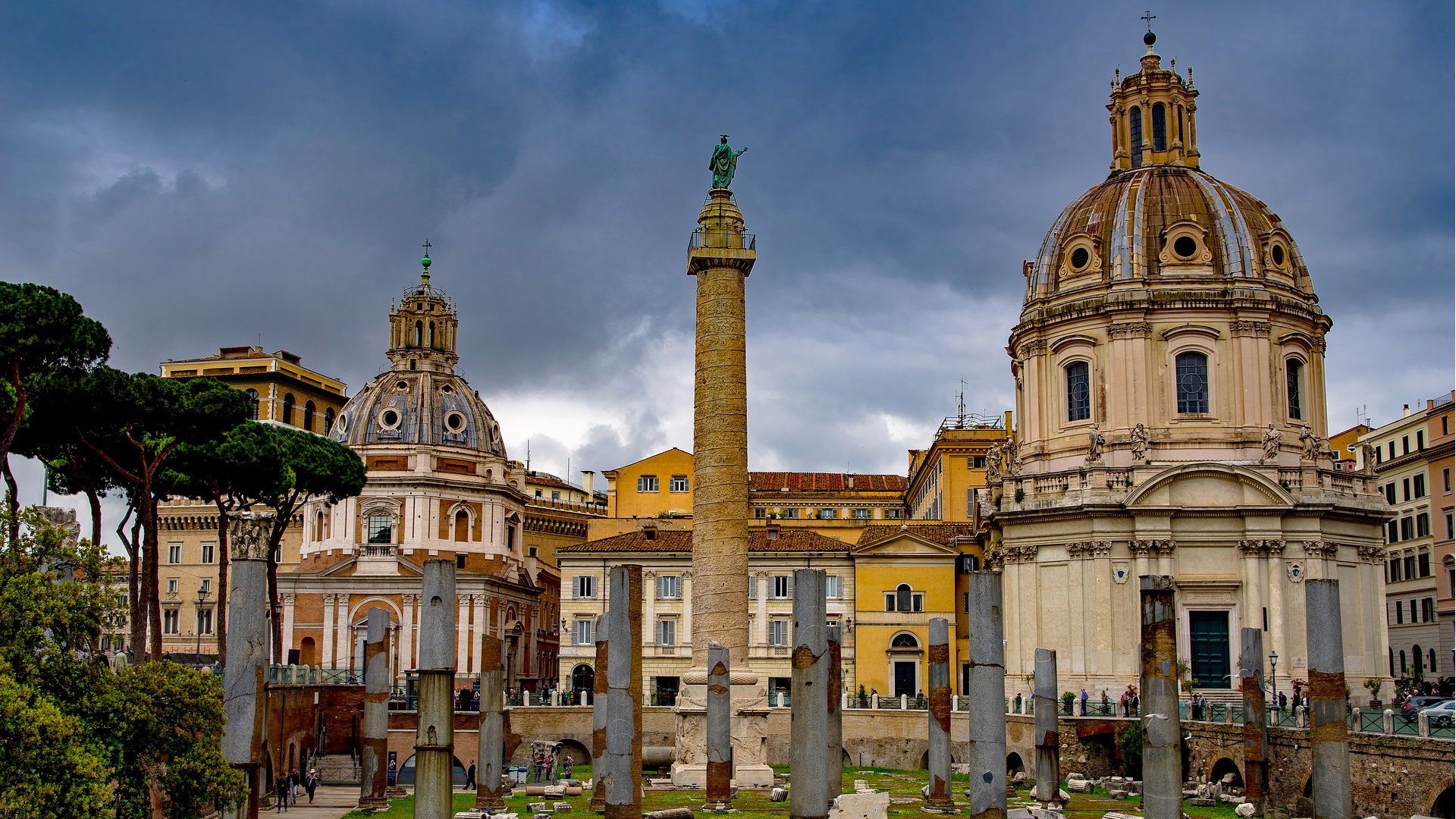
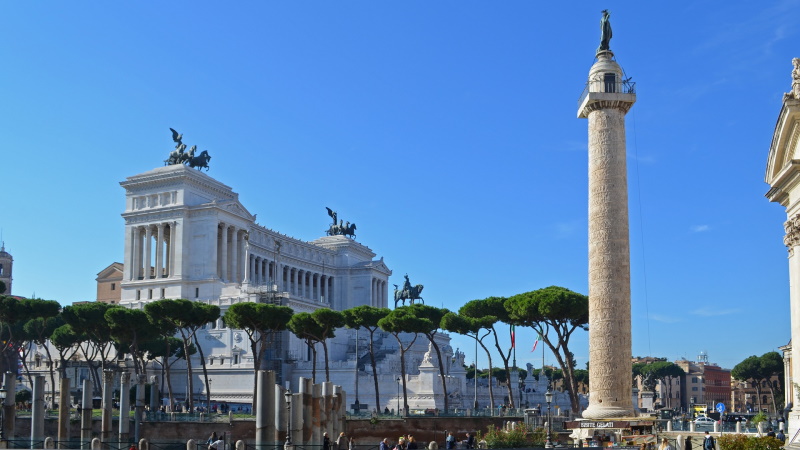

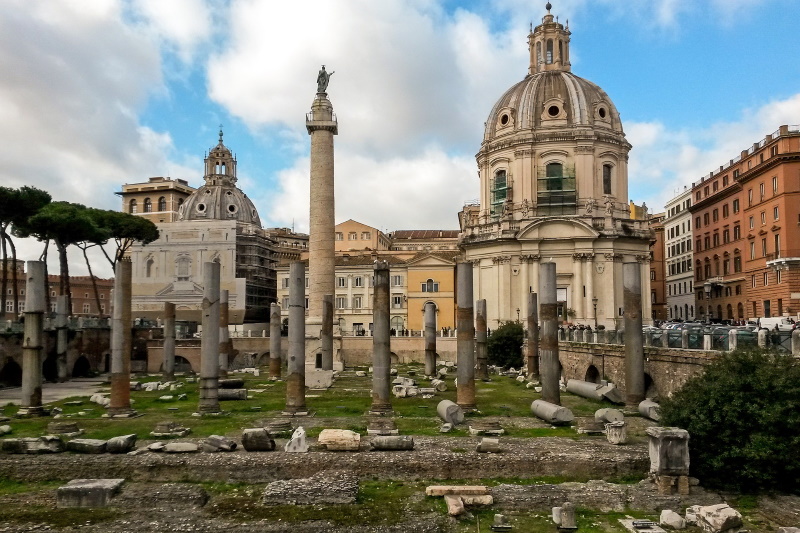
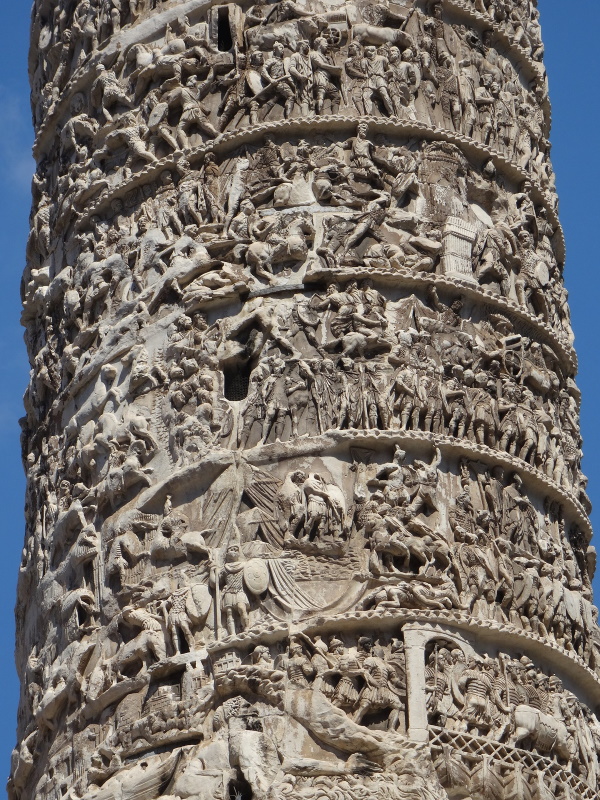
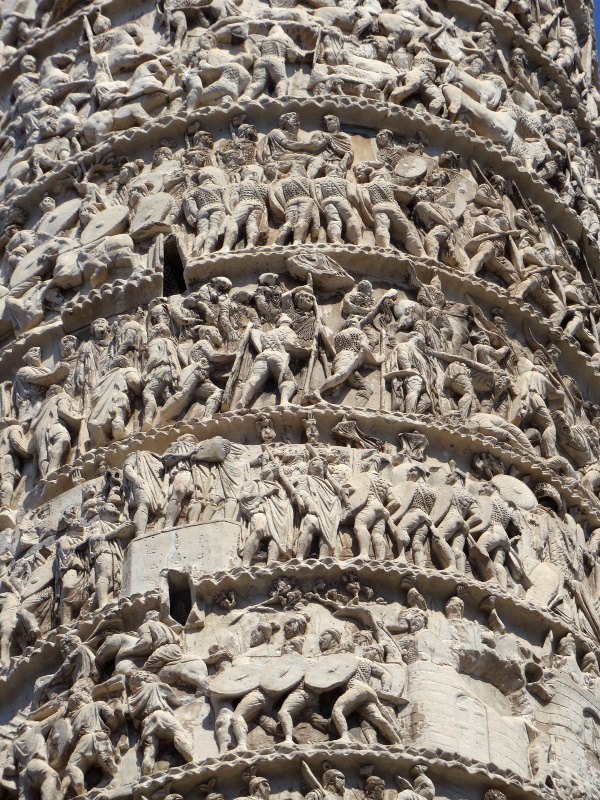
Erected in 113 A.D. to celebrate the deeds of emperor Trajan in Dacia, the Trajan's Column was the first triumphal one - with decorations that spiral along the shaft - ever raised.
Probably designed by Apollodorus of Damascus on the impulse of Trajan himself, the monument reaches almost 40 meters in height, including the base. It is the only monument which has come down to us practically intact, among those of the Forum of Trajan.
The Trajan's Column consists of 17 colossal rocks - cylindrical-shaped monolithic elements - with a diameter of about 4 meters. These wrap around the pillar 23 times and are decorated with astonishing reliefs: almost 200 meters of precious white marble that could be unrolled like a film. A film that tells of the victorious military campaigns conducted by Trajan against the Dacians to secure the borders of the Empire on the Danube. Inside it, a spiral staircase of 185 steps leads to the top.
The characters depicted are about 2,500. Among them, emperor Trajan is portrayed 59 times. As we have seen, the Column celebrated the conquest of Dacia but also had another function, that of a monument-mausoleum of Trajan: in fact, in the base was placed the golden urn with the ashes of the emperor, who died on 8 August 117, and on the top was placed a statue of him in gilded bronze which was probably lost during the Middle Ages. In 1587, it was replaced by Pope Sixtus V (1585-1590) with a new statue of St. Peter.
The Museo della Civiltà Romana (Museum of Roman Culture) boasts a collection of plaster casts of the relief of the Trajan's Column, which, aligned in four parallel rows placed at eye level, were made between 1861 and 1862 at the behest of Napoleon III.
Piazza Venezia
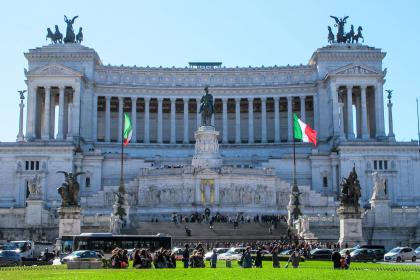
 Condividi
Condividi
Discovering the museums around piazza Venezia
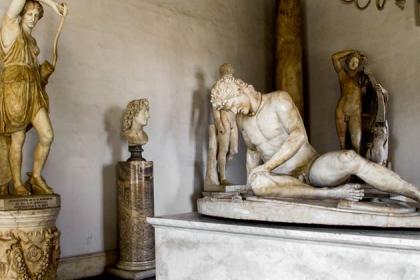
 Condividi
Condividi
Information
 Condividi
Condividi
Location
To find out about all accessibility services, visit the Rome accessible section.













































